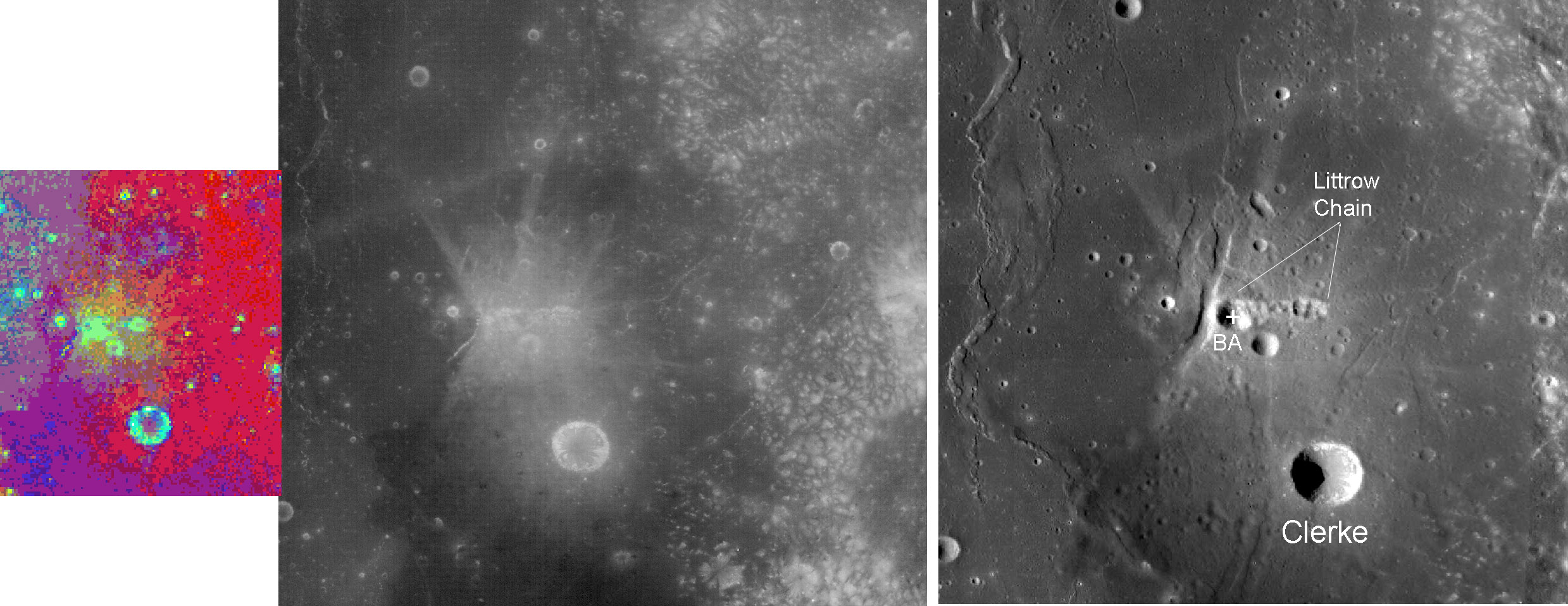Difference between revisions of "August 5, 2012"
| Line 23: | Line 23: | ||
Rükl plate [http://the-moon.wikispaces.com/R%C3%BCkl+25 25]<br /> | Rükl plate [http://the-moon.wikispaces.com/R%C3%BCkl+25 25]<br /> | ||
<br /> | <br /> | ||
| + | <p><b>Yesterday's LPOD:</b> [[August 4, 2012|Rim Ash?]] </p> | ||
| + | <p><b>Tomorrow's LPOD:</b> [[August 7, 2012|Intersections]] </p> | ||
<hr /> | <hr /> | ||
| − | |||
| − | |||
| − | |||
| − | |||
| − | |||
| − | |||
| − | |||
| − | |||
| − | |||
| − | |||
| − | |||
| − | |||
Revision as of 12:21, 7 February 2015
Secondary Rays

Color image from Clementine, and monochrome ones from LRO, with processing by Maurice Collins (center) and LRO team (right).
As soon as I looked at a high Sun mosaic of LRO Wide Angle Camera images of the southeastern edge of Mare Serenitatis that Maurice Collins
had constructed I was struck by a what appeared to be an oblique impact crater north of the Apollo 17 region. With enlargement and a closer look
it appears like a horizontal linear chain with rays radiating from the entire 10 km length (middle image). If this were Earth I would assume that the
chain was a volcanic fracture and the light material was ash ejected from it. But on the Moon bright material is almost always ejecta from impact
craters - was this a fresh crater chain with rays from each crater? The right image, from the lower Sun LRO QuickMap, suggests that only the crater
sometimes known as Littrow BA is likely to be young enough to be a ray crater. But if this line of craters - formally known as the Littrow Chain - is
a secondary chain or even more exotically a chain from a sheared comet or asteroid, all parts would have formed nearly at the same instant. The
NAC images of KA reveal a small pond of impact melt on its floor, so the crater is younger than its rim implies. The Clementine color composite (left)
shows that the bright material is compositionally different - it is orange - compared to the bright nimbus (red) around Clerke and older volcanics on
the right. Based on these images it seems that the components of the chain formed at about the same time, each crater ejecting its own rays. It was
an oblique impact, accounting for the zones of avoidance at both the left and right ends. Two things are unusual: it is a crater chain with rays, and a
young feature with irregular rims and an old morphology.
Chuck Wood
Related Links
Rükl plate 25
Yesterday's LPOD: Rim Ash?
Tomorrow's LPOD: Intersections



